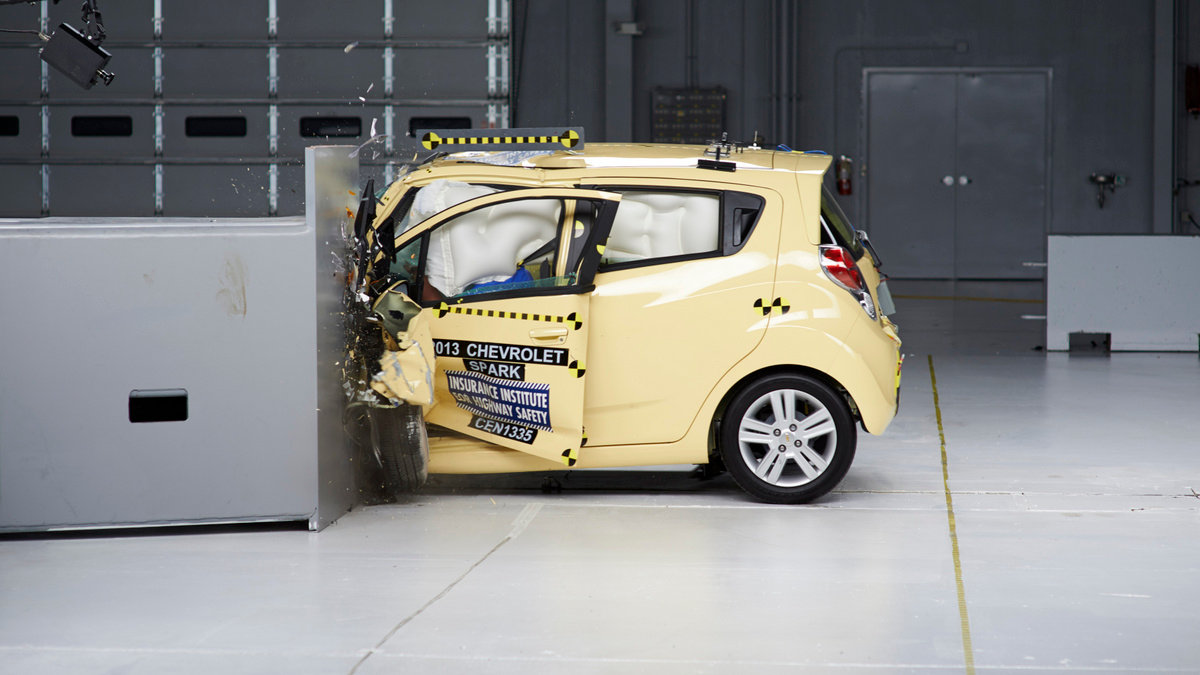
Çarpışma testleri rehberi ve en riskli otomobiller
Otomobil seçerken öncelikli kriterlerimizden biri güvenlik, ve güvenlik deyince aklımıza evvela bu konuyla ilgili aktif ve pasif donanımlar (ABS, ESP, hava yastıkları, çarpışma önleme sistemi vb.), ardından da o modelin EuroNCAP sonucu geliyor. Bu kurum tarafından yapılan testlerde çoğu model 4 ya da 5 yıldız aldığı, 3 yıldız ve altında kalan otomobiller epey ender olduğu için de, düşük puan özellikle sosyal medyada alay konusu haline geliyor ve o arabaya karşı kuvvetli bir argüman olarak kullanılıyor.
Eğer can güvenliğimizi ciddiye alıyorsak, bu konuya yüzeysel bakma lüksümüz yok: EuroNCAP prosedür ve kriterleri zaman içinde nasıl değişti, düşük puanın sebebi hangi kategori ve o kategori bizim için ne kadar önemli, 10 sene önceki test sonuçlarına bugün ne denli güvenebiliriz, tam puan alıp diğer öne çıkan güvenlik kurumlarının testlerinden sınıfta kalan modeller hangileri... sormalı, sorgulamalı ve mutlaka göz önünde bulundurmalıyız.
1 . Sürüş destek sistemleri
EuroNCAP 2009'da acil durum fren destek sistemi ve adaptif hız sabitleyici gibi aktif güvenlik sistemlerini de değerlendirmeye başladı ve o günden bu yana bu sistemlerin kriterlerdeki ağırlığı gitgide arttı. Bugün artık bu donanımları standart sunmayan bir aracın tam puan alması neredeyse imkansız.
Çoğu kullanıcı, genelde hayat kurtarmaktan ziyade dikkat dağıtan bu sistemleri arabasına biner binmez kapatmayı tecih ediyor. Eğer o kullanıcılardan biriyseniz, artık EuroNCAP'in dört ana kategorisinden biri olan bu sistemlerin puanını ayrı, diğer üç kategoriyi ayrı değerlendirmeniz gerekiyor. Güncel Renault Duster bunun tipik bir örneği: Test sonucu 3 yıldız fakat kategorilere tek tek baktığınızda, sürücü-yetişkin yolcu güvenliği 4, çocuk yolcu güvenliğiyse 5 yıldız.
Bir diğer örnek de BYD Atto 3: Çinli otomobil 2022'de girdiği ilk testten 5 yıldızla ayrıldı. Ancak kurum o dönem sürüş destek sistemlerinin sadece mevcudiyetini değerlendiriyor, nasıl çalıştıklarını sınamıyordu. Aynı model 2024'te EuroNCAP'e tekrar konuk oldu ve bu kez bu sistemlerin kendisi de test edildi. Nihayetinde kurum, adaptif hız sabitleyicisi kazaya sebebiyet verdiği için Atto 3'ü 'tavsiye etmediklerini' belirtti.
2 . Kaç hava yastığı?
Bazı otomobillerin EuroNCAP'e giren haliyle, bizde satılan versiyonu arasında standart donanım farkları olabiliyor ve bu da bizim için o test sonucunu nispeten geçersiz kılabiliyor. Bunun da en güncel örneği Renault Clio: Test sonucu 5 yıldız ancak testteki otomobilin aksine, Türkiye'de satılan hiçbir Clio 5'in perde hava yastığı yok. Kurumun 6 ana testinden 2'si yandan alınan darbeleri değerlendiriyor ve ikisinde de perde hava yastıkları açılıyor. Dolayısıyla Türkiye'de satılan bir Clio 5'in, o testten 5 yıldız alması mümkün değil.
3 . Yaya güvenliği
Geçen hafta bir takipçim, canlı yayınlarda ilan değerlendirirken, ilgili otomobilin güvenliğine yeterince değinmediğimden şikayet etti ve bunu da, sık sık tavsiye ettiğim Citroën C5 AirCross'un aldığı 4 yıldızla örnekledi. İlk bakışta haklıydı; hemen tüm rakipleri EuroNCAP'ten 5 yıldız almışken, benim bu konuya değinmeden 4 yıldızlı o modeli önermem sakıncalı görünüyordu. Ne var ki, otomobilin test sonuçlarına gene kategori bazlı baktığımızda, yaya güvenliği hariç hepsinden 5 yıldız aldığını, yaya güvenliğininse %58 yani 3 yıldızda kaldığını görüyoruz. Bu konunun önemi elbette yadsınamaz, ancak sanırım pek azımızın otomobil seçerken başlıca kriterlerinden biridir yaya güvenliği; hepimiz için kendi ve ailemizin sıhhati önce geliyor.
4 . Yüzde-puan ilişkisi
Farkındaysanız kategori sonuçlarını sizinle paylaşırken yüzdeler yerine yıldızları kullanıyorum. Örneğin C5 AirCross'un puanı yetişkin yolcular için %87, çocuklar için %86, sürüş destek sistemleriyse %75; ancak ben hepsi için '5 yıldız' dedim. Çünkü EuroNCAP'in değerlendirme kriterleri ve yıldızlara denk gelen puan aralığı, her kategori için farklı. Hatta kategoriyle beraber, seneden seneye bile farklılık gösterebiliyor. Misal şu an sürüş destek sistemlerine 5 yıldız verebilmeleri için %70 yeterliyken, yetişkin güvenliğinden 5 yıldız için en az %80 gerekiyor. Bu skalanın güncel haline, kurumun protokol sayfasından ulaşabilirsiniz.
5 . Zamanla değişen kriterler
Az evvel ifade ettiğimiz gibi, EuroNCAP'in kriteleri hemen her sene değişiyor ve katılaşıyor. Bilhassa 2009 öncesi bir modelin EuroNCAP sonucu, kabaca o otomobilin yapısal sağlamlığını, kafes güvenliğini ve standart sunulan hava yastığı adedini ölçümlüyordu. Sonrasındaysa protokoller gitgide kompleks bir hal almaya başladı ve testin çehresi değişti. Bunun en çarpıcı örneklerinden biri, Renault Zoe: 2013'te girdiği ilk testten 5 yıldızla ayrılan model, arabanın üstünde hemen hiçbir değişiklik yapılmamasına karşın, 2021'deki testten 0 yıldız aldı.
6 . Hava yastığı var da, ya açılmazsa?
Sosyal medyada muhakkak önünüze düşmüştür: Korkunç bir kazaya karışarak perte çıkmış olmasına rağmen hava yastıkları açılmayan, ya da tam aksine ters yönden çok hafif bir darbe almasına karşın tüm hava yastıkları birden açılan otomobiller. Pek tabii sensör konumu başta olmak üzere, hava yastıklarının açılıp açılmaması üstünde farklı etkenler söz konusu. Yalnızca aracın kaportasının geldiği hale bakarak, bu konuda bir yargıda bulunamayız; asıl önemli olan kabin, yani kafes güvenliği. Zaten çoğumuzu şaşkına çeviren bu tür örneklerin tamamına yakınında, sürücü ve yolcuların en ufak bir yara almadan araçtan sağ çıktıklarını görüyoruz, ki mühim olan da o. Fakat hava yastığı sayısı bir yana, tetiklenme eşiği ve kriteleri konusunda markadan markaya, hatta modelden modele ciddi varyasyonlar söz konusu ve bunları ölçen bir test henüz yok.
7 . Hava yastığı var da, ya açılırsa?
Hatırlarsınız, daha evvelki makalelerimizden birinde değinmiştik: Satın aldığınız 2000 model sonrası ikinci el bir otomobilde Takata marka hava yastığı yer alıyorsa, o hava yastığının hatalı üretim olma ihtimali kuvetli ve 2013 sonrası geri çağırmalar kapsamında yetkili serviste değiştirilmediyse, açılması en az açılmaması kadar yüksek bir hayati risk arz ediyor.
8 . EuroNCAP vs. IIHS
Dünyada EuroNCAP'in bölgesel türevleri (Latin NCAP, ANCAP (Avustralya ve Yeni Zelanda) gibi) dahil olmak üzere, çarpışma testleri uygulayan başka pek çok kurum da var ve bunlardan başlıcası, IIHS. Amerikalı kurum, 1992'den bu yana oldukça zorlayıcı çarpışma testleri uyguluyor ve yakın geçmişe kadar, EuroNCAP'den 5 yıldız alan çoğu modelin IIHS'nin bazı testlerinden sınıfta kaldığına şahit oluyorduk. Bu testlerin başında da 'small overlap', yani ön-sürücü tarafından aracın küçük (yaklaşık %25'lik) bir kısmına aldığı darbe sonucunu değerlendiren test geliyor (kapak fotoğrafındaki Spark'ın başına gelen de o). 'Moderate overlap' adlı, bu kez ön yüzey alanının yarıya yakınını kapsayan test de, kurumun diğer çetin sınavları arasında.
İşte EuroNCAP'ten tam puan almasına karşın, IIHS'yi —kısmen— geçemeyen bazı modeller:
- 2013 Honda Jazz (Fit) —Small overlap
- 2018 Ford Kuga (Escape) —Small overlap
- 2023 Jeep Renegade —Moderate overlap
- 2023 Jeep Grand Cherokee —Moderate overlap
- 2023 Subaru Impreza —Yandan darbe
- 2023 Subaru Crosstrek —Yandan darbe, moderate overlap
Aynı EuroNCAP gibi, IIHS de 2013'ten bu yana 'kaza önleme testi' adı altında, sürüş destek sistemlerini de test ediyor. 2023'te konuk olan SUV'lar arasından yalnızca Subaru Forester bu testi başarıyla geçerken, ülkemizde de satılan Mazda CX-5 ve Mitsubishi Outlander ise 'zayıf' sonuçla ayrıldı.
9 . Güvenliği en zayıf otomobiller
Son olarak gelin EuroNCAP'in kurulduğu 1997'den bu yana, kurum tarafından en düşük puan alan diğer modellerden bazılarını hatırlayalım:


2 Yorum